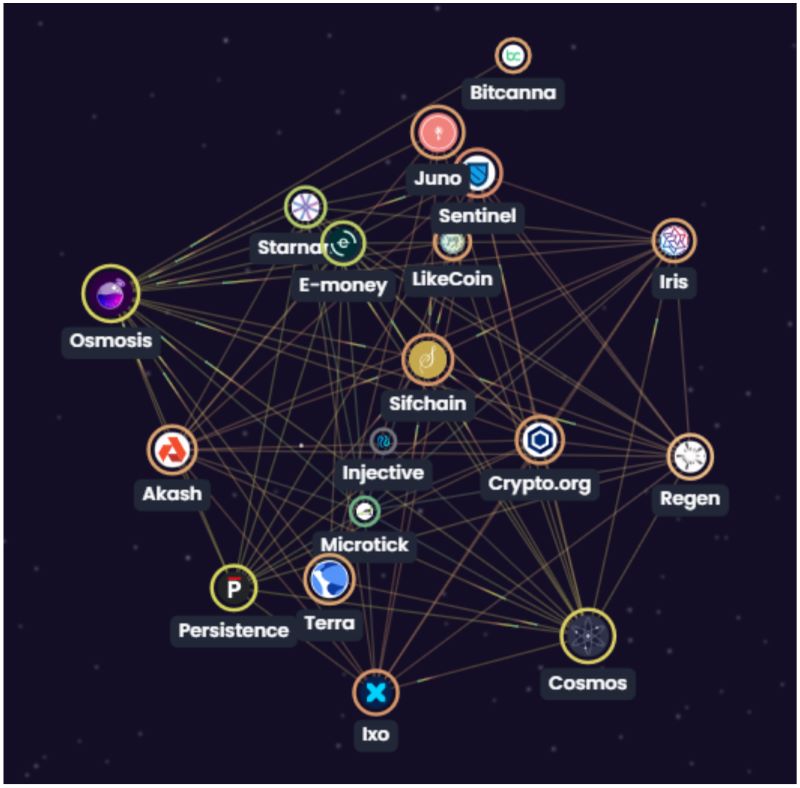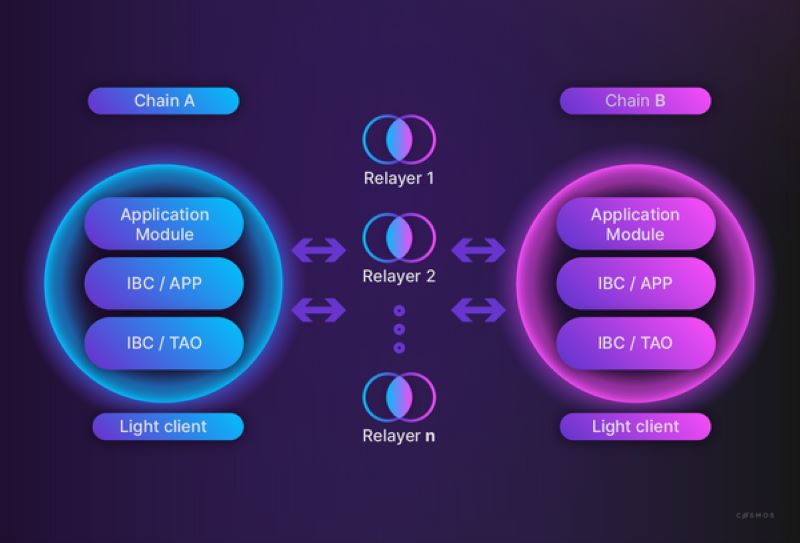Unlocking the Mysteries of Inter Blockchain Communication (IBC): A Beginner’s Guide
You’ve heard of Bitcoin and Ethereum, but what is Inter Blockchain Communication (IBC)? It’s the tech magic that lets different blockchains ‘talk’ to each other. Imagine a world where you can move data or currency across various blockchain systems seamlessly. That’s IBC! We’ll dive into how IBC opens doors for blockchains to work together, making them smarter and more powerful. Join me, and let’s explore the core concepts, practical uses, and technical bits that make IBC a game-changer in today’s crypto world. Get ready to understand why this tech is key for the future of decentralized systems. Here we go!
Exploring the Core Concepts of Inter Blockchain Communication (IBC)
Demystifying IBC Protocol Explanation and Blockchain Interoperability
Imagine visiting a place where everyone speaks a different language, but you understand them all. That’s kind of like IBC, or Inter Blockchain Communication. It lets different blockchains ‘talk’ to each other. This ‘chat’ helps them exchange value and data securely. This way, one blockchain can do something and another will get it and can respond.
Now let’s dive deeper. Before IBC, blockchains worked alone, like islands. They couldn’t share or move stuff around. IBC changes this. It’s like building bridges between these islands. It’s huge for blockchain interoperability. This means blockchains can now understand and work with each other.
With IBC in play, sending your digital coins from one chain to another is easy and safe. But this is just a start. IBC opens doors to all sorts of cool things in the digital world!
The Role and Impact of Cross-Chain Communication in Blockchain Systems
Now, why does this ‘cross-chain communication’ matter? Think of playing a game where each level is a different blockchain. Without IBC, you can’t move your game scores or digital goodies between levels. With IBC, you can! It helps things flow across blockchain systems.
Cross-chain communication makes blockchains better. It lets people get creative with apps and services. Users enjoy more options and devs can build awesome things not limited to one blockchain.
But how does it affect you? It means more power in your hands. You can now move your digital stuff, like coins or game items, across chains without trouble. If one chain is slow or costly, move to a faster, cheaper one! It’s like having VIP access in the digital world.
This isn’t just talk, it’s real, and it’s growing. More and more chains are using IBC to join the party. It’s a game-changer for sure. It’s making the digital world more connected, and isn’t that what the future’s about?
Cross-chain communication is not just fancy tech. It’s changing how we think about blockchain and what it can do for us. And we’re just getting started.
Delving into the Practical Applications of IBC
IBC Use Cases in Decentralized Networks and DeFi
Have you ever wondered if blockchains can talk to each other? They can, thanks to IBC! Inter Blockchain Communication (IBC) lets different blockchains share info and value securely. It’s like having two separate cities connected by bridges that allow people to visit back and forth.
In decentralized networks, IBC is a game-changer. It helps different systems talk and work together without a boss. For instance, IBC lets a blockchain that tracks ownership of digital art talk to one used for payments. This means you could buy an art piece on one blockchain using a coin from another!
In DeFi, which stands for decentralized finance, IBC is super important. DeFi lets people handle money things without traditional banks. With IBC, people can swap, lend, or borrow coins across many DeFi platforms. Whatever they do, it’s like going to different stores in a mall because they’re all in one place!
Understanding the Significance of Cryptocurrency Bridges and IBC Token Transfer
Now, imagine bridges between islands, but these islands are blockchains. Cryptocurrency bridges are just that! They let you send coins from one blockchain to another. This is like having dollars and buying something in a place where they only accept euros. The bridge changes your dollars to euros for you so you can make your purchase.
When you transfer IBC tokens, it is pretty much moving money from your pocket to a friend’s pocket. But instead of being right next to each other, you are in different rooms. IBC makes sure that the money reaches your friend safely without anyone else taking it.
By using IBC, blockchains don’t stay alone like islands anymore. They become part of a bigger world. So, if you have a favorite game token, you could one day use it to get a loan on a totally different platform! It opens up so many chances for everyone to do new things with their tokens.
To sum it up, IBC is like those cool bridges and tunnels you see in movies, connecting places. It lets blockchains pass things like coins, digital stuff, and data between them smoothly. And it all happens in a way that’s safe and fair for everyone. This connects places in the world of blockchains, making it easier to do lots of cool stuff!
The Technical Underpinnings of IBC within the Cosmos Ecosystem
IBC Implementation and the Cosmos Network IBC Framework
Imagine a world where different blockchains talk to each other just like friends. This is what Inter Blockchain Communication (IBC) does. IBC lets blockchains send messages and value to one another. It is like building bridges between isolated islands, making a network of connected chains.
The Cosmos network IBC is key in making this happen. It acts like a postman, carrying letters (or in this case, transactions and data) from one blockchain to another. With the Cosmos network’s help, IBC is sure to work well.
IBC technology is not just about sending messages. It also follows strict rules to keep things safe and trusty. You wouldn’t want someone snooping through your letters, right? IBC makes sure that nobody messes with the data as it goes from one place to another.
Now, the Cosmos SDK is like a toolbox that helps builders make blockchains that work with IBC. With this, they can create a system where different blockchains understand each other and work together without any mishaps.
Fostering Blockchain Scalability Solutions Through Cosmos SDK and IBC
One big head-scratcher in the blockchain world is scalability. It’s like trying to fit a big pizza into a small box. The Cosmos SDK with IBC offers a way to make more room. It does this by letting many smaller, faster chains work at the same time, all connected by IBC.
Think of it like a busy city with many roads. Instead of one big road where everyone gets stuck in traffic, there are many smaller streets where cars (or in our case, transactions) can move quickly. This is what the Cosmos SDK and IBC can do for blockchains.
This setup means blockchains can handle more things at once, like many video calls happening at the same time without glitches. When IBC enters the picture, it’s as if these calls could also connect people from different countries seamlessly.
But it’s not just about speed, it is also about working well with others. IBC helps blockchains talk to each other, no matter how different they are. So a blockchain in the gaming world can chat with one in finance, for example. This opens up new chances for apps and services that use more than one blockchain.
IBC doesn’t just help existing apps and coins, but also new ideas like NFTs and DeFi. They can move across blockchains without trouble, thanks to IBC. It’s like having a passport that works everywhere, making things a lot easier.
By using IBC, the Cosmos network makes sure that its blockchains play nice together. This can lead to big things, creating a web of blockchains that support each other. With IBC, we can hope for a future with many connected blockchains, working side by side like partners in a big dance.
Advancing Blockchain Networks with IBC Technology
Addressing Interoperability Challenges and Security Concerns
Imagine you’re in a room full of people speaking different languages, but you all need to work together. In the world of blockchain, this is a big puzzle. How do we get separate blockchains to talk and share with each other? Here’s where IBC, or Inter Blockchain Communication, steps in like a super translator. It lets different blockchains send value and info back and forth in a safe way. IBC is key for blockchains to work as a team.
These blockchains are like islands. Before IBC, they were all alone, with no bridges between them. Each held its own special info and coins. But now with IBC, we can build invisible bridges. This means someone from Blockchain Island A can send a coin to Blockchain Island B smoothly, no sweat!
Security is a huge deal here. We don’t want sneaky thieves or tricky lies crossing our bridges. IBC watches out for this using smart tech that checks everything is legit. It’s like having a super careful guard who never sleeps, making sure only the right stuff gets across. This trust is what makes IBC such a game changer.
Let’s get a bit nerdier here. IBC uses a kind of handshake. This handshake is not like a high five or fist bump; it’s a fancy tech trick. It confirms both sides are ready and all set to chat away. If something’s off, the handshake stops, and no secrets or coins can sneak by. Super safe, right?
Facilitating Cross-Ledger Transfers and Multi-Chain Ecosystem Interactions
Now that we’ve got our bridges set and our security guard in place, what’s next? Well, think of a big, busy city. People and cars are going all over the place. In our blockchain city, these are coins and messages zipping around between chains. With IBC, blockchains can share their stuff like neighbors borrowing sugar or tools.
Remember, no blockchain is an island anymore, not really. IBC transforms them into social butterflies. They’re all chit-chatting and swapping stuff like best buds. This sharing fest makes everything more valuable.
Cross-ledger transfers are the fancy term for moving coins across these blockchain buddies. It’s like sending mail from one country to another. IBC makes sure your mail gets to the right place, safe and sound. No lost packages here!
And for you app wizards, this means your super cool app can now talk to many blockchains. Before IBC, it was like being stuck on a single playground. But now, your app can hop from one playground to another, making new pals and discovering new games.
So to wrap this chat up, IBC is like the heart of a bustling blockchain city. It pumps life into every blockchain street and alley, bringing them all together. This makes our crypto world friendlier and way more fun. It’s a big deal, and honestly, it’s just the beginning!
In this post, we dug into how blockchains talk to each other using IBC. We looked at why it’s key for different chains to work together. From DeFi to money bridges, we saw how IBC opens doors for new ways to exchange stuff online. We then got into the techie side, checking out how the Cosmos network lets blockchains scale and grow. Lastly, we touched on better security for when blockchains link up, and how this tech makes moving things across chains smooth. As someone who eats, sleeps, and breathes this stuff, I believe IBC is a game-changer. It’s all about letting different blockchains share and grow, and that’s huge for the future of online money and beyond!
Q&A :
What is the purpose of Inter Blockchain Communication (IBC)?
Inter Blockchain Communication (IBC) is designed to enable different blockchain networks to transfer tokens and other digital assets with each other seamlessly. The main purpose of IBC is to foster interoperability between independent blockchains, allowing them to communicate, share data, and conduct transactions in a secure and trustless manner, thus expanding their capabilities and potential applications.
How does IBC enhance blockchain interoperability?
IBC enhances blockchain interoperability by providing a standardized protocol for relaying messages between distinct blockchains. This protocol defines how blockchains can authenticate each other’s messages and ensure that inter-chain communication is consistent and reliable. By enabling blockchains to understand each other’s transactions and state changes, IBC strengthens the network’s ability to execute cross-chain interactions, such as asset transfers, smart contract calls, and data sharing.
Can IBC work with any blockchain platform?
IBC is designed to be compatible with a wide range of blockchain platforms, primarily those which have deterministic finality and a means to establish the authenticity of their transactions. Blockchains that are built using the Cosmos SDK, for instance, are IBC-ready. However, for IBC to function, each blockchain involved must integrate the IBC protocol and adhere to its standards, which may require modifications if the platform does not natively support IBC.
What are the security features of IBC?
IBC employs several security features to protect the integrity of inter-chain communication. It uses cryptographic proofs to ensure that only valid transactions are relayed between blockchains, thereby preventing double spending and other fraudulent activities. Additionally, IBC’s statefulness allows chains to keep track of the state of other chains to enhance resilience against attacks. The protocol also includes mechanisms for dispute resolution and recovery in case of irregularities.
What potential applications are enabled by IBC?
The potential applications of IBC are vast and varied. It enables decentralized applications (dApps) to function across multiple blockchain ecosystems, which can lead to the development of more robust and versatile applications. Examples include cross-chain exchanges, collaborative chains for specific industries, multi-chain smart contracts, and wider networks for decentralized finance (DeFi) platforms. Essentially, IBC expands the use cases for blockchain technologies by allowing assets and data to flow freely between different platforms.





